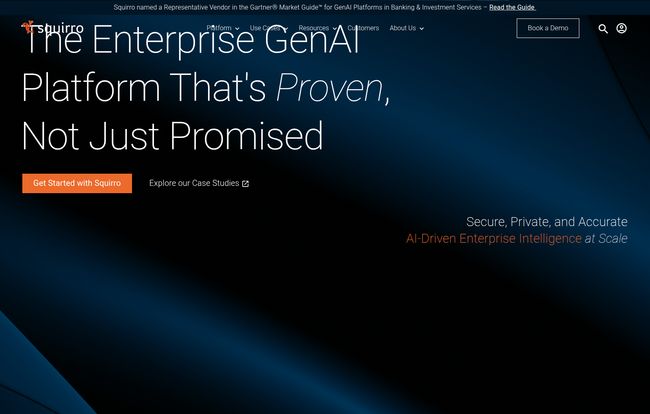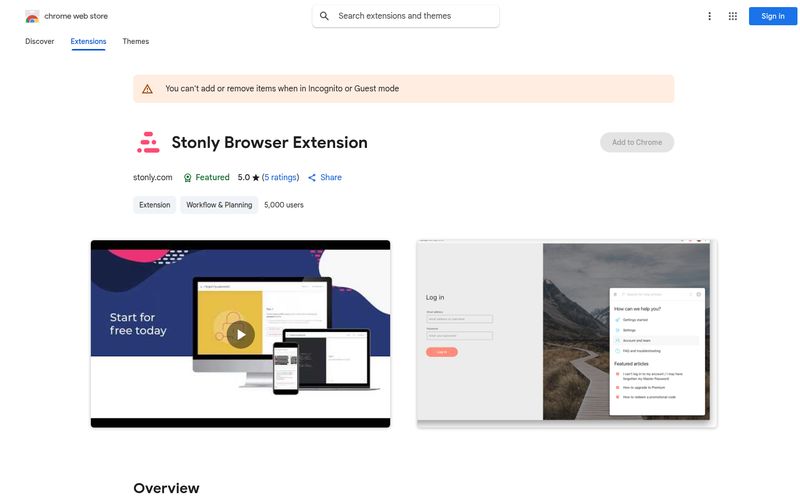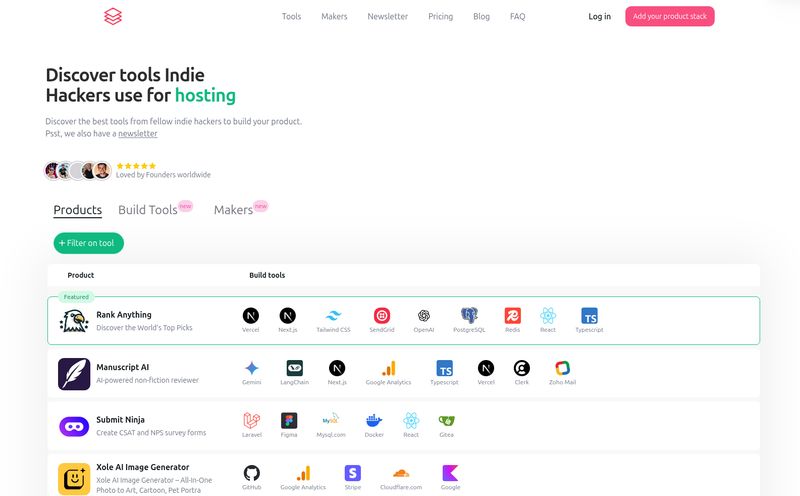The last couple of years have been a whirlwind of AI everything. It seems like every software company on the planet has frantically bolted a chatbot onto their product and called it a revolution. We're drowning in promises of AI-powered efficiency, but for those of us in the trenches, especially at the enterprise level, a lot of it feels... flimsy. It's like putting a rocket engine on a rowboat. Sure, it's exciting for a second, but is it safe? Is it going anywhere useful? Is it going to sink the whole operation?
I’ve been in the SEO and digital strategy game for a long time, and my hype-meter is pretty well-calibrated. So when I come across a platform that doesn’t just shout about AI but talks seriously about things like privacy, accuracy, and scalability, my ears perk up. That’s what happened when I started looking into Squirro. This isn’t your average, consumer-grade AI toy. This is a platform built from the ground up for the complex, messy, and security-obsessed world of big business.

Visit Squirro
So, What Exactly is Squirro?
Forget the idea of a simple Q&A bot for a moment. Think of Squirro as a secure, private, all-knowing brain for your entire organization. Its job is to connect to all of your disparate data sources—we're talking everything from Salesforce and SharePoint to your internal databases and shared drives—and make sense of it all. It’s an Insight Engine. The goal isn't just to find a document for you; it's to find the specific answer within that document, connect it to a related insight from a completely different system, and present it to you so you can make a smarter decision, faster.
Why Your Company Can't Just "Use ChatGPT"
I hear it from executives all the time: "Why can't our teams just use one of the public AI tools? They're powerful!" And I get the temptation. But it’s a minefield. For any serious enterprise, running your business on a public large language model (LLM) is like holding your most sensitive board meetings in a public park. There are two massive problems that platforms like Squirro are built to solve.
The Big Security Headache
When your employees paste customer data, internal strategy documents, or proprietary code into a public AI tool, where does that data go? Who sees it? How is it being used to train the next version of the model? These are not small questions. For industries governed by strict compliance laws like finance, healthcare, or government, it's a non-starter. You need a closed-loop system where your data remains your data. Period.
When Good AI Goes Bad: The Hallucination Problem
We’ve all seen the screenshots of AIs confidently making things up. It’s funny when you're asking for a recipe for a chocolate-quinoa casserole, but it’s catastrophic when you're making a multi-million dollar financial decision. Businesses run on facts, not creative fictions. An enterprise AI has to be accurate and, crucially, it has to be able to show its work. It needs to cite its sources from your own internal documents, not some random webpage from 2019.
Squirro's Core Toolkit: How It Actually Works
This is where it gets interesting. Squirro isn’t just a single thing; it’s a stack of components designed to tackle those enterprise-level challenges head-on.
The Magic of Knowledge Graphs
This, for me, is the real secret sauce. A standard search just finds keywords. A Knowledge Graph finds relationships. Imagine a detective's evidence board, with photos, documents, and bits of string connecting everything. That's what Squirro builds with your data. It knows that “Project Titan” mentioned in an email is the same “Project Titan” in a SharePoint folder and is related to the Q3 financial report in your database. By understanding these connections across more than 45 different data sources, it can deliver insights that you’d never find otherwise. It’s the difference between knowing what and understanding why.
AI Guardrails: Keeping the Robots in Line
This is a term you're going to hear a lot more. AI Guardrails are the rules of the road for your AI. They ensure the platform adheres to your company's specific security protocols and access controls. This means a sales intern can ask a question and get an answer based on public-facing marketing materials, while the CFO can ask the same question and get a completely different, more sensitive answer based on internal financial data. It's about delivering the right information to the right people, and only the right people. It's a layer of control that is absolutly essential for any large-scale deployment.
Does It Actually Deliver? Let's Talk Numbers.
Okay, the tech is cool. But does it move the needle? I'm always skeptical of shiny case studies, but some of the figures Squirro presents are hard to ignore. We’re talking about a reported 95% time savings on processes like collection risk analysis and a staggering EUR 2.2 million saved on foreign transaction reconciliation for one major financial institution. These aren't fuzzy "improved collaboration" metrics. This is cold, hard cash and time. This is the kind of ROI that gets a CFO's attention. It shows the platform is being applied to solve real, costly business problems, not just as a fancy search bar.
Who Should Be Looking at Squirro?
Let's be clear: this isn't for a five-person startup. Squirro is built for the big leagues. We’re talking about large, data-intensive organizations. Their client list says it all: central banks, global asset managers, manufacturers, and government bodies. If your organization struggles with data silos (and whose doesn’t?), has a low tolerance for risk, and operates in a regulated industry, you are squarely in their target demographic. If the cost of a single bad decision based on incomplete information is huge, then a platform like this starts to make a lot of sense.
The All-Important Question: What Does Squirro Cost?
You've probably already guessed it. You won't find a pricing page with neat little tiers. Squirro is enterprise-grade software, and that means enterprise-grade pricing. You'll need to contact them and book a demo to get a custom quote based on your organization's specific needs—number of users, data sources, implementation complexity, etc. Don't let that scare you off. In my experience, this is a good sign. It means you’re not buying an off-the-shelf product; you’re investing in a tailored solution. The initial investment will likely be significant, but for the right company, the ROI we talked about earlier could make it a bargain.
My Unfiltered Opinion on Squirro
The Things I Genuinely Like
I'm impressed by the security-first approach. It’s not an afterthought; it’s baked into the core of the platform. The Knowledge Graph technology is a genuine differentiator that solves the accuracy and context problem many other AIs face. And I appreciate that they are recognized by industry analysts like Gartner. That provides a level of external validation that's hard to argue with.
A Few Things to Keep in Mind
This isn't a plug-and-play solution. Integrating a platform this powerful into existing, complex IT ecosystems requires technical expertise and a real commitment. There will be an implementation process. This isn’t a flaw, just a reality of enterprise software. It's a strategic investment, not a quick fix, and any potential buyer needs to go in with their eyes open, ready to dedicate the necessary resources to do it right.
Conclusion: Is Squirro the Right Move for Your Enterprise?
After digging in, Squirro strikes me as one of the few companies that truly understands the unique demands of enterprise AI. They're not just selling a large language model; they're selling a secure, accurate, and controllable intelligence layer for your entire business.
If you're leading a large organization that's drowning in data, hamstrung by information silos, and rightly paranoid about the security risks of generic AI, then Squirro should be on your shortlist. It’s not the cheapest or simplest option out there, but for complex challenges, you rarely want the cheapest or simplest tool. You want the one that works. Squirro seems to be exactly that.
Frequently Asked Questions about Squirro
- 1. What is Squirro used for?
- Squirro is an enterprise GenAI and Insight Engine platform. It connects to all of a company's data sources to provide secure, accurate, and context-aware answers to complex business questions, helping to boost productivity and improve decision-making.
- 2. Is Squirro secure for sensitive company data?
- Yes. Security and privacy are core features. Squirro operates as a closed-loop system, meaning your data stays within your control. It includes robust access controls and AI Guardrails to ensure data is handled according to your company's policies.
- 3. How is Squirro different from other AI platforms?
- Squirro's key differentiators are its use of Knowledge Graphs to understand relationships in data for higher accuracy, its strict AI Guardrails for security and compliance, and its proven scalability for large, complex enterprise environments.
- 4. What kind of companies use Squirro?
- Squirro is trusted by large organizations in data-sensitive industries, including banking and financial services, asset management, manufacturing, and government bodies.
- 5. How do I get pricing for Squirro?
- Squirro offers custom pricing based on the specific needs of an organization. To get a quote, you need to contact their sales team directly, typically by booking a demo through their website.
- 6. What are "AI Guardrails"?
- AI Guardrails are a set of rules, controls, and filters within the Squirro platform that govern the AI's behavior. They enforce security policies, manage user permissions, ensure compliance, and prevent the AI from generating inaccurate or inappropriate responses.



